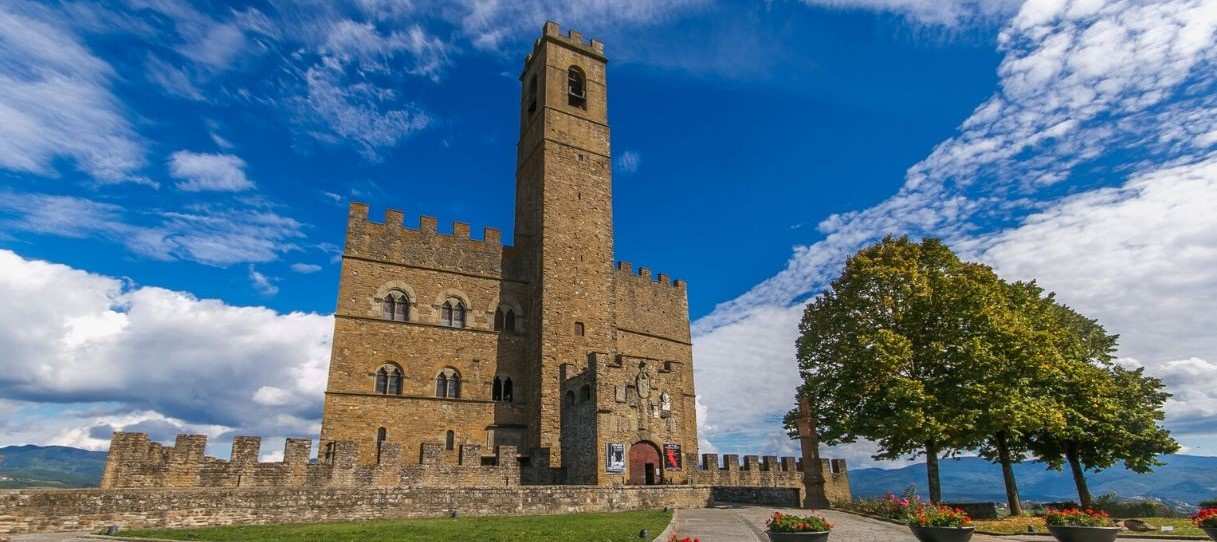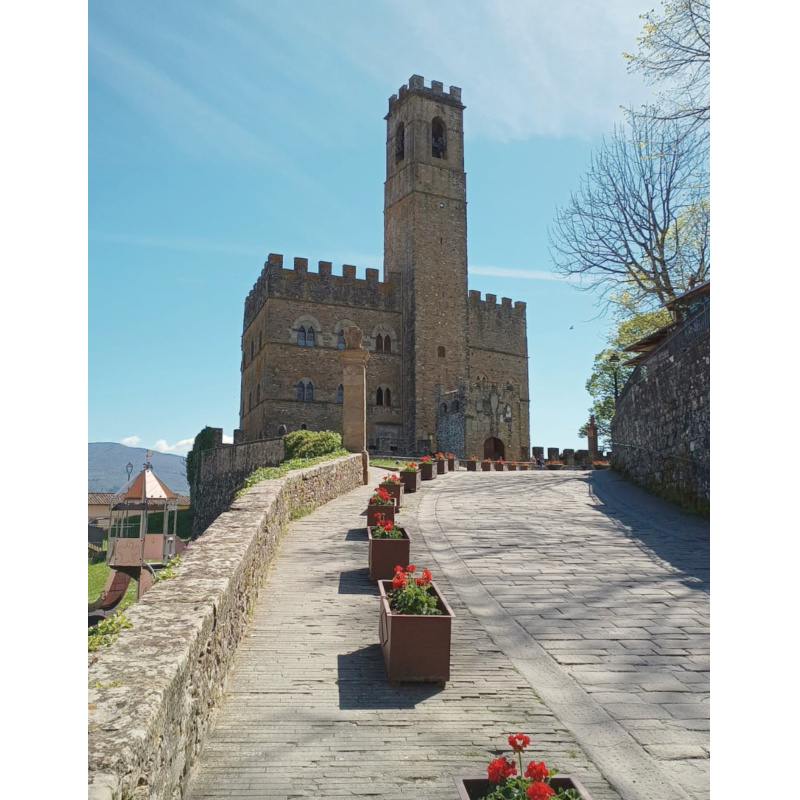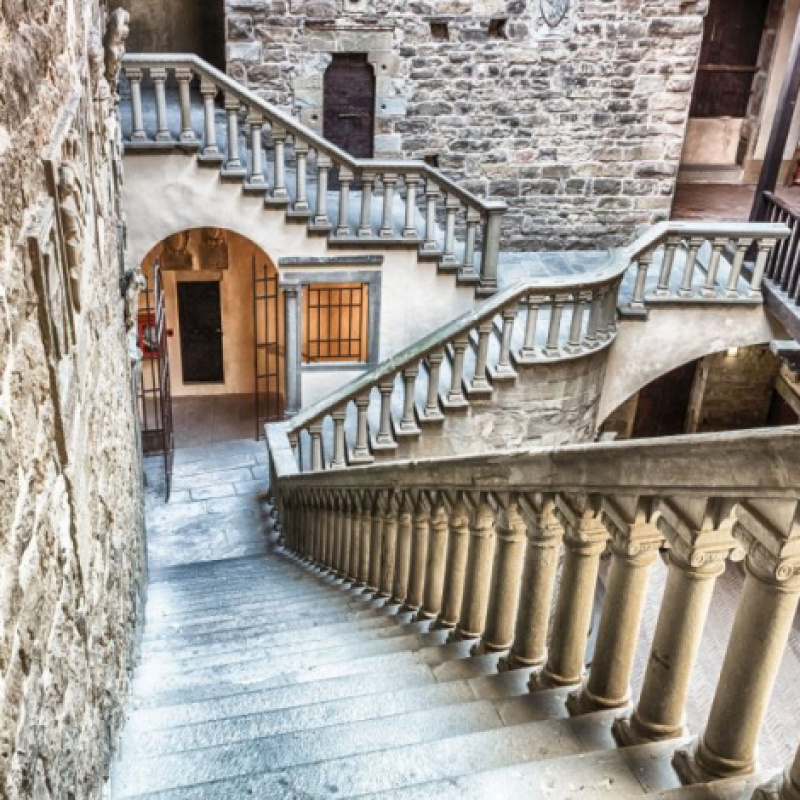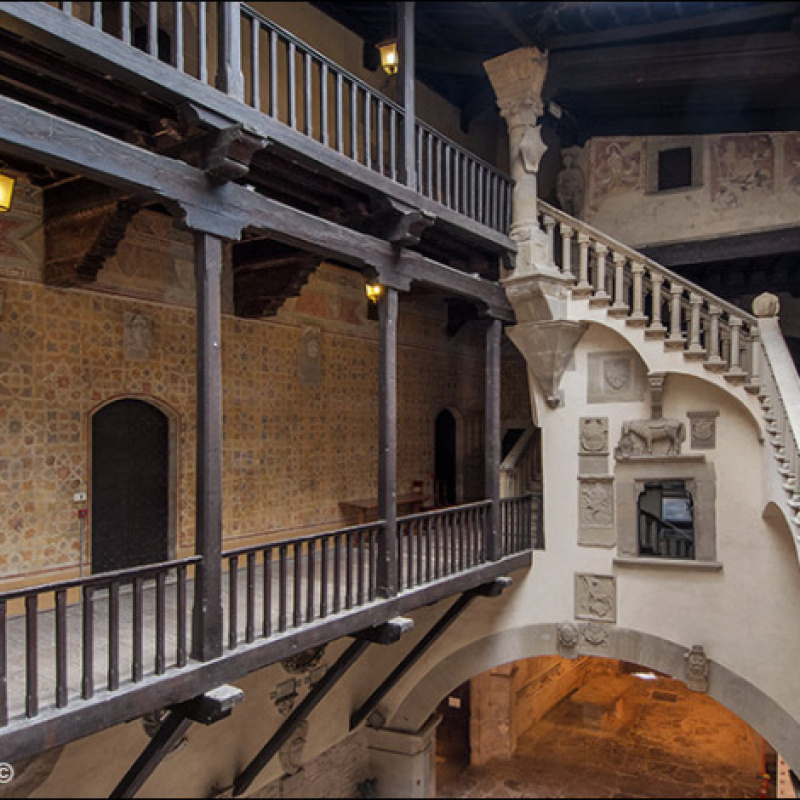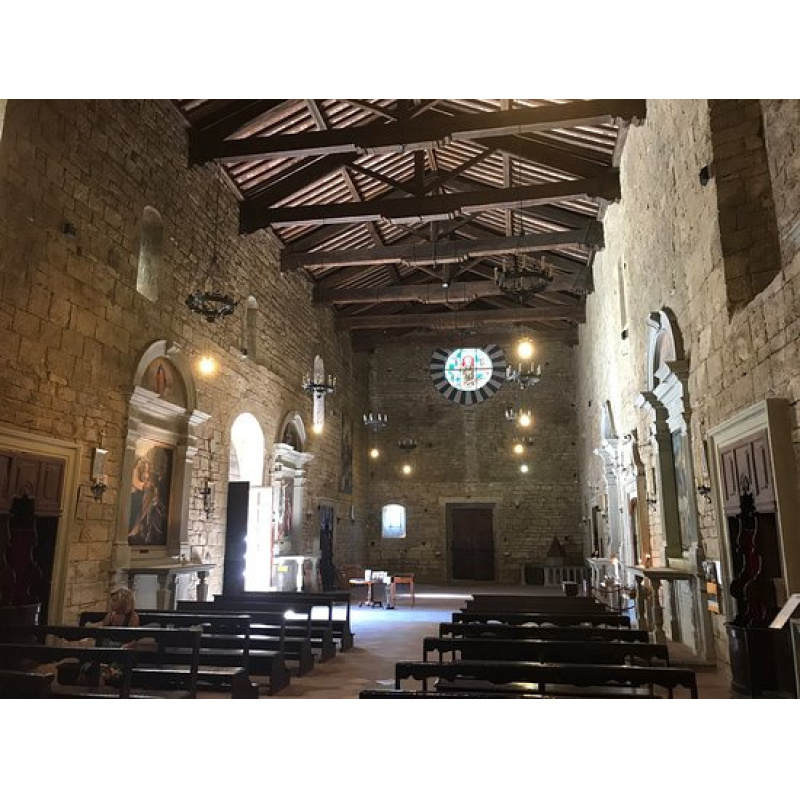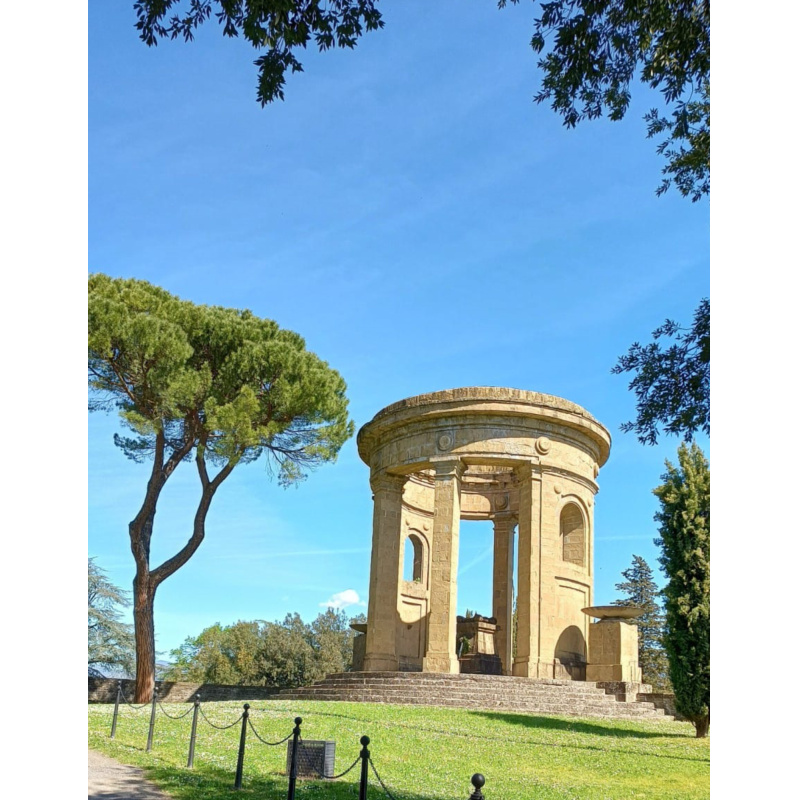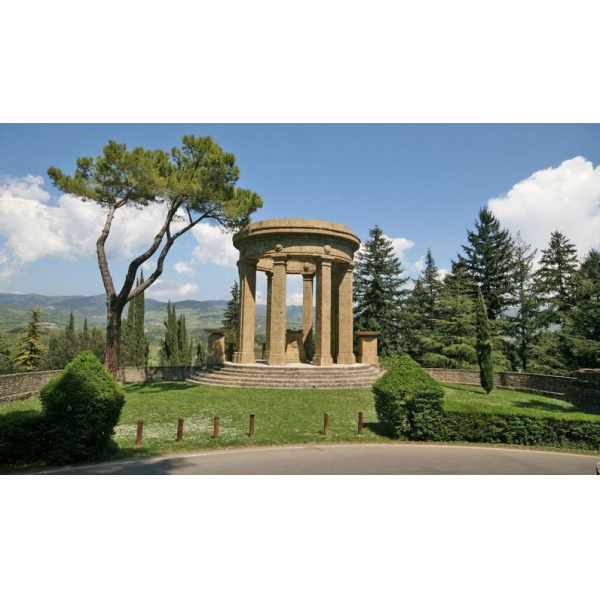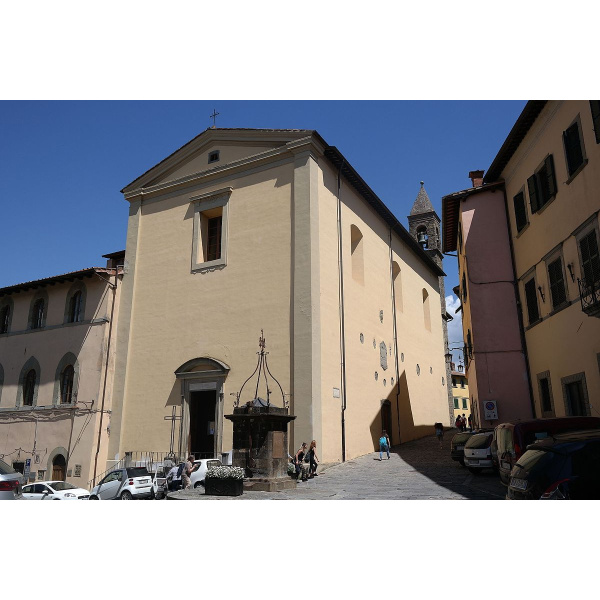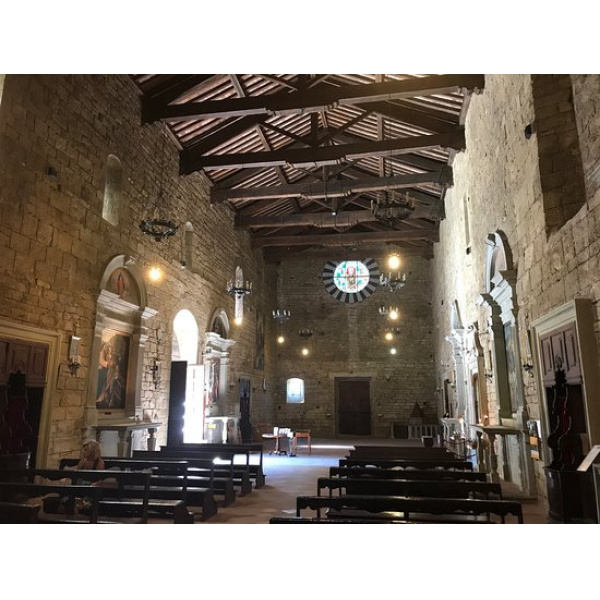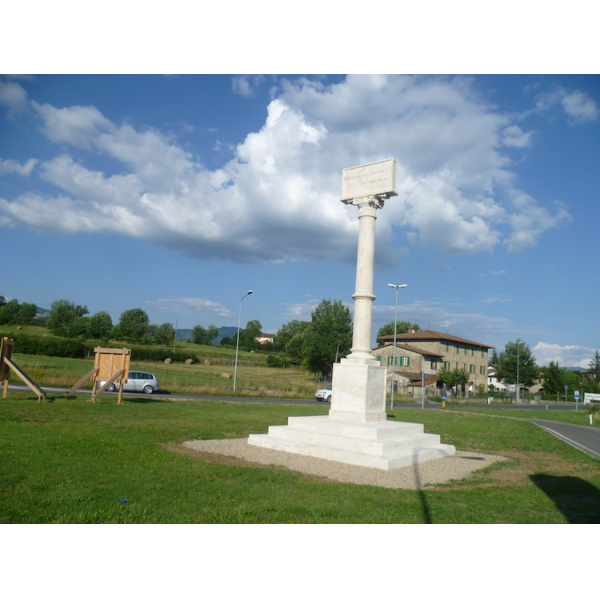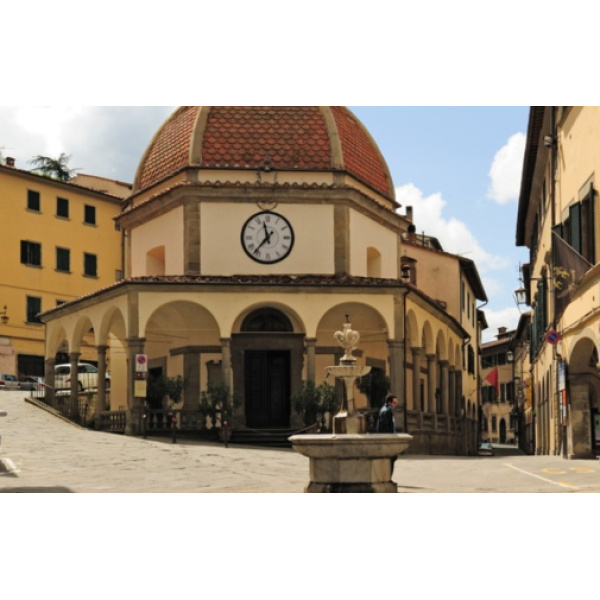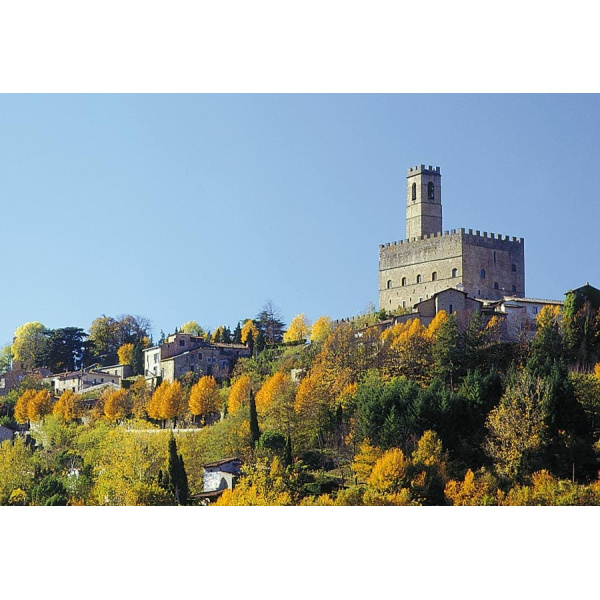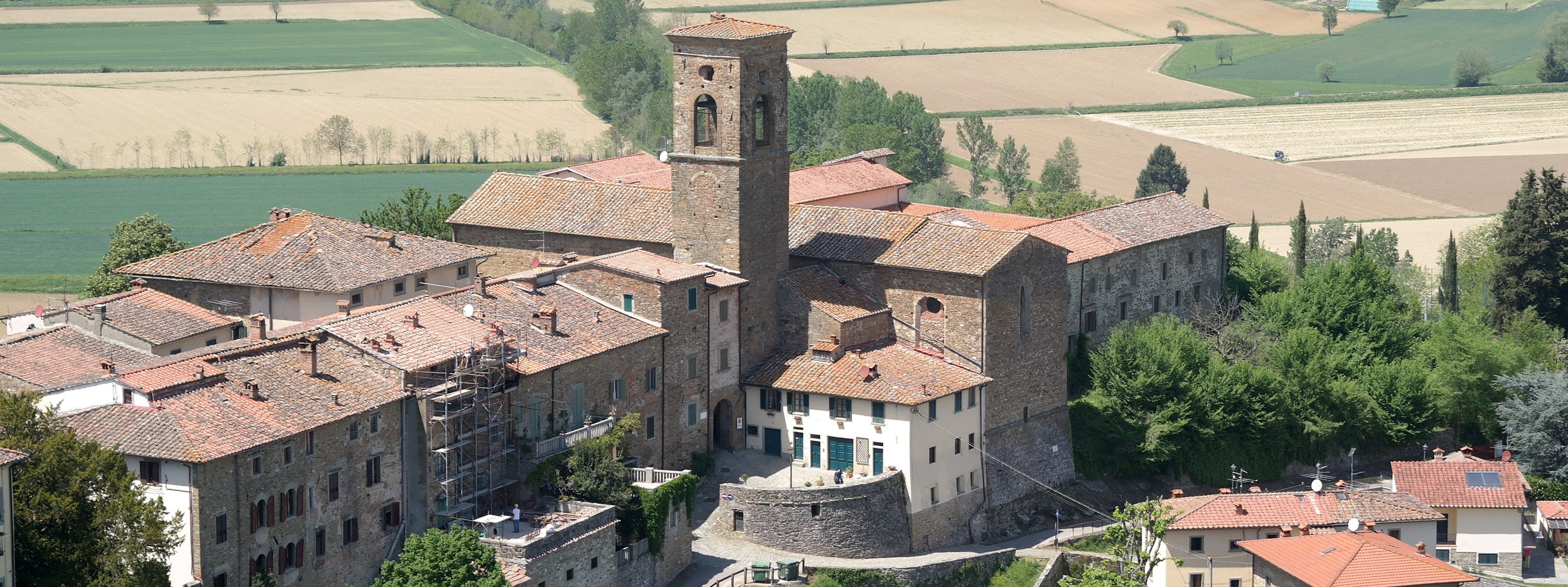La Storia
Il pittoresco borgo di Poppi, affacciato nel cuore del Parco Nazionale delle Foreste Casentinesi nella provincia di Arezzo, si erge maestosamente a 437 metri sul livello del mare, offrendo un'esperienza autentica e affascinante tra le testimonianze architettoniche medievali. Questa località è stata meritatamente inclusa tra i Borghi più belli d'Italia, grazie alla sua storia ricca e alle sue bellezze intramontabili. Origini e Storia: Poppi, il cui nome si presume derivi dalla parola "poplo", che significa poggio o colle, ha radici profonde che si intrecciano con la potente famiglia feudale dei Conti Guidi. Dal 1191 al 1440, questa famiglia ha dominato e governato il borgo, con il Castello di Poppi che fungeva da fulcro per le attività amministrative e politiche. La storia di Poppi è permeata da eventi significativi, tra cui la memorabile battaglia di Campaldino nel 1289, in cui persino Dante Alighieri partecipò, con la vittoria di Firenze sui ghibellini di Arezzo. Cosa Vedere a Poppi: Il Castello dei Conti Guidi: Il Castello dei Conti Guidi, che domina il borgo con le sue antiche mura, si presenta come uno dei monumenti più ammirati e meglio conservati del Casentino. Costruito intorno al X secolo e soggetto a numerose ristrutturazioni, il castello accoglie i visitatori con la sua imponenza. Una torre campanaria è subito evidente anche da lontano, e al suo interno, il cortile ornato di stemmi dei vicari fiorentini racconta storie antiche. La Biblioteca Rilliana, con oltre 25.000 volumi, il salone delle feste e il Museo con il plastico della battaglia di Campaldino arricchiscono ulteriormente l'esperienza culturale. La Badia di San Fedele: A nord del borgo, oltre il lungo porticato, sorge l'interessante Badia di San Fedele, fondata nel X secolo. La sua cripta custodisce le spoglie del Beato Torello, patrono di Poppi, mentre il campanile, ottenuto dalla trasformazione di una delle torri delle mura, aggiunge un elemento di autenticità storica al panorama. Edifici Religiosi: Poppi è arricchita da vari edifici religiosi, tra cui l'Oratorio della Madonna del Morbo in Piazza Amerighi, costruito nel XVII secolo per ringraziare la Madonna per la protezione dalla peste. La Propositura dei Santi Marco e Lorenzo, con dipinti di Francesco Morandini, insieme ad altri luoghi di culto situati fuori dal centro abitato, contribuisce a consolidare il patrimonio religioso della zona. Parco Zoo della Fauna Europea: Per un'esperienza immersiva nella natura, il Parco Zoo della Fauna Europea offre un'oasi verde di circa 50 ettari. Attraverso un percorso di circa 2 km, i visitatori possono esplorare l'habitat naturale ricreato di specie animali autoctone, rendendo questa attrazione un punto di interesse unico. Le strade medievali, le piazze, i portici e le antiche botteghe di Poppi trasportano i visitatori in un'atmosfera che evoca il fascino del passato. Un borgo che fonde storia, cultura e bellezze naturali, Poppi rappresenta un autentico tesoro nel cuore della Toscana, invitando gli esploratori a immergersi in una vivida storia e a scoprire la bellezza intramontabile di questa affascinante località.
Categoria: Luoghi / Place To Visit
Poppi English version
The picturesque village of Poppi, nestled in the heart of the Casentino National Forest Park in the province of Arezzo, majestically stands at 437 meters above sea level, offering an authentic and enchanting experience with its medieval architectural landmarks. This destination has rightfully earned its place among the most beautiful villages in Italy, thanks to its rich history and timeless beauty.
Origins and History: Poppi, whose name is presumed to derive from the word "poplo," meaning hill or hillside, has deep roots intertwined with the powerful feudal family of the Conti Guidi. From 1191 to 1440, this family dominated and governed the village, with the Poppi Castle serving as the focal point for administrative and political activities. Poppi's history is permeated with significant events, including the memorable Battle of Campaldino in 1289, where even Dante Alighieri participated, resulting in Florence's victory over the Ghibellines of Arezzo.
Things to See in Poppi:
-
The Castle of the Conti Guidi: The Castle of the Conti Guidi, overlooking the village with its ancient walls, stands as one of the most admired and well-preserved monuments in Casentino. Built around the 10th century and subject to numerous renovations, the castle welcomes visitors with its grandeur. A bell tower is immediately noticeable even from a distance, and inside, the courtyard adorned with the coats of arms of Florentine vicars tells ancient tales. The Rilliana Library, with over 25,000 volumes, the banquet hall, and the museum featuring the model of the Battle of Campaldino further enrich the cultural experience.
-
The Abbey of San Fedele: To the north of the village, beyond the long arcade, stands the fascinating Abbey of San Fedele, founded in the 10th century. Its crypt houses the remains of Blessed Torello, the patron saint of Poppi, while the bell tower, obtained from the transformation of one of the tower walls, adds an element of historical authenticity to the panorama.
-
Religious Buildings: Poppi is enriched by various religious buildings, including the Oratory of the Madonna del Morbo in Piazza Amerighi, built in the 17th century to thank the Madonna for protection from the plague. The Propositura dei Santi Marco e Lorenzo, with paintings by Francesco Morandini, along with other places of worship located outside the inhabited center, contribute to consolidating the religious heritage of the area.
-
European Fauna Zoo Park: For an immersive nature experience, the European Fauna Zoo Park offers a green oasis of about 50 hectares. Through a path of about 2 km, visitors can explore the recreated natural habitat of native animal species, making this attraction a unique point of interest.
The medieval streets, squares, arcades, and ancient shops of Poppi transport visitors to an atmosphere that evokes the charm of the past. A village that blends history, culture, and natural beauty, Poppi represents an authentic treasure in the heart of Tuscany, inviting explorers to delve into a vivid history and discover the timeless beauty of this fascinating destination.
